4 X Apple Platies – Xiphophorus Maculatus – Livebearer (4), Beautiful Community Fish for Thriving Aquariums, Perfect Companions for Guppies and Neon Tetras
£12.99 Original price was: £12.99.£10.65Current price is: £10.65.
Welcome these beautiful 4 X Apple Platies, known as Xiphophorus Maculatus, to your aquarium. Their stunning colors and graceful movements make them ideal community fish. Perfect companions for guppies and neon tetras, they thrive in peaceful environments, enhancing your aquatic display.
1 in stock
Species Introduction
Welcome these beautiful creatures, the Apple Platy, scientifically known as Xiphophorus maculatus. Originating from the warm, shallow waters of Central America, these vibrant livebearers are admired for their stunning colors and peaceful demeanor. Their natural habitat includes rivers and streams where they thrive in lush vegetation and gentle currents. As a member of the Poeciliidae family, the Apple Platy is a popular choice among aquarists due to its adaptability and graceful movements. These small freshwater fish typically reach a maximum length of about 6 cm, making them ideal companions in community tanks alongside other species like guppies and neon tetras. Their lively nature and social behavior create a delightful atmosphere, as they flit about the tank, showcasing their beautiful coloration and engaging in playful interactions with their tank mates.
Care Requirements Dashboard
| Optimal Living Conditions | |
|---|---|
| Water Temperature | 24-27°C (75-81°F) |
| pH Level | 6.5-7.5 |
| Water Hardness | 4-12 dKH |
| Minimum Tank Size | 80L (20 gal) |
| Salinity | Freshwater |
| Care Level | Beginner Friendly |
✓ Care Level: Easy
Tank Size: Minimum 20 gallons
Water Temperature: 22-28°C (72-82°F)
pH Level: 6.8-8.5
Water Hardness: 10-28 dGH
The Apple Platy is considered an excellent choice for both novice and experienced aquarists due to its easy care requirements. A minimum tank size of 20 gallons is recommended to provide ample swimming space and to maintain stable water parameters. The ideal water temperature for these fish ranges from 22 to 28 degrees Celsius (72 to 82 degrees Fahrenheit), with a pH level between 6.8 and 8.5, and a water hardness of 10 to 28 dGH. Regular water changes and monitoring of these parameters are essential to ensure a healthy environment for your aquatic companions. With proper care, these beautiful fish can thrive and bring joy to your aquarium for several years.
Natural Behavior & Temperament
Apple Platies are known for their peaceful and social nature, making them ideal candidates for community tanks. They exhibit a range of natural behaviors, including swimming in schools, foraging for food, and exploring their environment. These fish are generally non-aggressive and can coexist with a variety of other species, including guppies and neon tetras. Their social behavior is enhanced when kept in groups, as they feel more secure and display more vibrant colors. Observing their interactions can be a delightful experience, as they engage in playful chases and establish social hierarchies within their group. Apple Platies are also known to be curious and will often investigate new additions to their tank, showcasing their inquisitive nature. Their lively swimming patterns and interactions create a dynamic and engaging aquarium environment.
Tank Setup Guide
Creating an ideal environment for your Apple Platies involves replicating their natural habitat as closely as possible. A well-planted aquarium with plenty of hiding spots is essential for their comfort and security. Use a substrate that allows for easy planting, such as fine gravel or sand, and incorporate live plants like Java fern, Anubias, and Amazon sword. These plants not only provide shelter but also contribute to the overall health of the aquarium by improving water quality and offering grazing opportunities for your fish. Additionally, adding driftwood and rocks can create interesting structures for your platies to explore. Ensure that your tank has adequate filtration to maintain water quality, as these fish are sensitive to poor water conditions. A gentle water flow is ideal, as it mimics their natural habitat and keeps them comfortable.
Water Quality Management
✓ Good Water Quality is Essential
pH Level: 6.8-8.5
Temperature: 22-28°C (72-82°F)
Hardness: 10-28 dGH
Maintaining optimal water quality is crucial for the health and wellbeing of your Apple Platies. Regular water testing should be conducted to ensure that the pH, temperature, and hardness levels remain within the recommended ranges. A pH level between 6.8 and 8.5 is ideal, while the water temperature should be maintained between 22 and 28 degrees Celsius (72 to 82 degrees Fahrenheit). The hardness of the water should be kept between 10 and 28 dGH. Frequent water changes—approximately 25% weekly—will help to remove toxins and replenish essential minerals. Additionally, using a quality water conditioner can help to neutralize harmful chemicals and create a safe environment for your fish. Regular maintenance and monitoring will ensure that your Apple Platies thrive in a healthy aquarium.
Feeding & Nutrition
Important Feeding Note
Feed a varied diet including high-quality flakes, pellets, and frozen or live foods.
Apple Platies are omnivorous and thrive on a varied diet that includes high-quality flake food, pellets, and occasional treats of frozen or live foods such as brine shrimp, daphnia, and bloodworms. A balanced diet will ensure that they receive all the necessary nutrients for optimal health and vibrant coloration. It is recommended to feed them small amounts 2-3 times a day, ensuring that they consume all food within a few minutes to prevent overfeeding and water quality issues. Additionally, incorporating vegetable matter such as blanched spinach or spirulina can enhance their diet and promote digestive health. Monitoring their feeding habits is essential, as it can provide insights into their health and wellbeing. Adjusting their diet according to their activity level and growth stage will help maintain their vitality.
Compatibility Guide
✓ Ideal Tank Mates
Guppies, Neon Tetras, Corydoras, and other peaceful species.
Apple Platies are known for their peaceful temperament, making them excellent companions in community tanks. They thrive alongside other peaceful species such as guppies, neon tetras, and Corydoras catfish. When selecting tank mates, it is important to avoid aggressive species that may stress or harm your platies. Ideal companions will share similar water parameter requirements and exhibit non-aggressive behavior. Keeping a ratio of one male to two or three females is advisable to reduce stress and prevent aggressive mating behaviors. Observing the dynamics of your community tank is crucial, as it allows you to make adjustments if any compatibility issues arise. Overall, creating a harmonious environment will enhance the beauty and enjoyment of your aquarium.
Tank Mate Compatibility Guide
Great Tank Mates
- Other peaceful community fish
- Corydoras catfish
- Small tetras
- Peaceful dwarf shrimp
Avoid These Tank Mates
- Aggressive cichlids
- Large predatory fish
- Fin nippers
Compatibility Note: Always research specific species requirements and observe fish behavior when introducing new tank mates. Individual fish personalities can vary!
Health & Wellness
Maintaining the health and wellness of your Apple Platies is essential for their longevity and vitality. Regular observation is key to detecting any signs of illness or distress. Common health issues include ich, fin rot, and swim bladder disease. Ich, characterized by white spots on the body, can be treated with appropriate medications and increased water temperature. Fin rot, often caused by poor water quality, can be prevented through regular maintenance and prompt treatment with antibacterial medications. Swim bladder disease may result from overfeeding or poor diet; adjusting feeding practices can help alleviate this condition. Additionally, ensuring a stress-free environment with adequate hiding spots and stable water parameters will significantly reduce the risk of illness. Regular health check-ups and preventive measures will contribute to the overall wellbeing of your aquatic companions.
Breeding Information
Breeding Apple Platies is a rewarding experience for aquarists, as these livebearers are known for their prolific reproduction. To encourage breeding, maintain a healthy and stable environment with optimal water conditions. Providing plenty of hiding spaces and vegetation will help protect the fry from being eaten by adult fish. Typically, female platies will give birth to 20-80 fry every 4-6 weeks, depending on their age and health. After birth, the fry should be separated from the adults to prevent predation. Fry can be fed with finely crushed flakes or specialized fry food until they are large enough to consume regular food. Monitoring their growth and health during this stage is crucial, as proper nutrition and care will ensure their successful development into healthy adults. With the right conditions, you can enjoy watching the next generation of these beautiful fish flourish in your aquarium.
Acclimation Process
Introducing new Apple Platies to your aquarium requires a careful acclimation process to minimize stress and ensure a smooth transition. Begin by floating the sealed bag containing the fish in the aquarium for about 15-20 minutes to equalize the temperature. After this, gradually introduce small amounts of aquarium water into the bag every 5 minutes for about an hour. This process helps the fish acclimate to the water chemistry of their new environment. Once acclimated, gently release the platies into the tank using a net, avoiding adding bag water to the aquarium to prevent introducing potential contaminants. Monitoring the fish closely for signs of stress or illness during the first few days is essential. Providing a calm and quiet environment will help them adjust more comfortably to their new home.
Long-term Care
Caring for your Apple Platies over the long term involves regular maintenance and monitoring of their environment. These fish can live for 3-5 years with proper care, so establishing a routine for water changes, feeding, and tank maintenance is essential. Regularly test water parameters to ensure they remain within the ideal ranges, and perform partial water changes weekly to maintain water quality. Additionally, observe the fish for any signs of stress or illness, and address any issues promptly. Providing a varied diet and ensuring a balanced environment will contribute to their overall health and longevity. Engaging with your fish and observing their behaviors not only enhances your enjoyment but also allows you to ensure they are thriving in their aquatic home.
Natural Habitat Recreation
Recreating the natural habitat of Apple Platies in your aquarium is essential for their comfort and wellbeing. These fish thrive in environments rich in aquatic vegetation, providing them with hiding spots and grazing opportunities. Incorporate live plants such as Java moss, hornwort, and water sprite to create a lush environment that mimics their natural habitat. Additionally, using driftwood and rocks can enhance the aesthetic appeal of the tank while providing shelter for the fish. Maintaining a gentle water flow will help replicate the conditions of their natural streams and rivers. By focusing on creating a biotope that reflects their natural surroundings, you will not only enhance the beauty of your aquarium but also promote the health and happiness of your Apple Platies.
Seasonal Care Adjustments
Seasonal changes can impact the care requirements for your Apple Platies, particularly in terms of temperature and lighting. During the warmer months, ensure that the water temperature does not exceed 28 degrees Celsius (82 degrees Fahrenheit), as higher temperatures can stress the fish. In contrast, during cooler months, consider using an aquarium heater to maintain a stable temperature within the recommended range. Adjusting the lighting schedule can also benefit the fish, as they thrive with a consistent light cycle. Providing 10-12 hours of light per day will help promote healthy plant growth and support the natural behaviors of your platies. Being attentive to these seasonal adjustments will contribute to the overall health and wellbeing of your aquatic companions throughout the year.
Expert Tips
For those looking to enhance their experience with Apple Platies, consider implementing some expert tips for optimal care. Regularly varying their diet can prevent boredom and promote better health; try incorporating different types of high-quality foods, including spirulina flakes and freeze-dried options. Additionally, maintaining a well-planted tank not only enhances aesthetics but also provides essential hiding spots and grazing areas for the fish. Observe their behavior closely to identify any signs of stress or illness early, allowing for prompt intervention. Engaging with your fish through gentle interactions can help build trust and reduce stress levels. Lastly, consider joining an aquarium community or forum to share experiences and gain insights from fellow aquarists, as this can provide valuable information on advanced care techniques and best practices.
Troubleshooting
Despite your best efforts, you may encounter challenges when caring for Apple Platies. Common issues include stress from aggressive tank mates, poor water quality, and dietary deficiencies. If you notice signs of stress, such as hiding or erratic swimming, assess the tank environment and consider re-evaluating tank mates. Regular water testing will help you identify any imbalances that may be affecting your fish. If dietary deficiencies are suspected, ensure that you are providing a varied diet that meets their nutritional needs. Should health issues arise, consult with a knowledgeable aquarium professional for guidance on treatment options. Remember, patience and observation are key to successfully troubleshooting any problems that may occur in your aquarium.
Scientific Background
The Apple Platy, or Xiphophorus maculatus, belongs to the family Poeciliidae and is a member of the livebearer group of fish. This species is characterized by its vibrant colors and peaceful nature, making it a favorite among aquarists. Research into the biology and behavior of Xiphophorus maculatus has revealed much about their adaptability and reproductive strategies. Conservation efforts are essential to protect their natural habitats, as many freshwater ecosystems are threatened by pollution and habitat destruction. Understanding the scientific background of these fish not only enhances your appreciation for them but also highlights the importance of responsible aquarium practices and conservation efforts.
Advanced Care Techniques
For experienced aquarists looking to elevate their care for Apple Platies, consider implementing advanced techniques such as selective breeding to enhance desirable traits. This process involves carefully selecting breeding pairs based on color, size, and health to produce offspring with specific characteristics. Additionally, utilizing a quarantine tank for new arrivals can prevent the introduction of diseases into your main aquarium. Regularly researching advancements in aquarium technology, such as automated water testing and monitoring systems, can also enhance your ability to maintain optimal conditions for your fish. Engaging in continuous education about aquatic husbandry and participating in local fish clubs can further enrich your experience and knowledge as an aquarist.
Water Quality Parameters
Optimal Range
24-27°C
6.5-7.5
0 ppm
Caution Zone
22-24°C or 27-29°C
6.0-6.5 or 7.5-8.0
0.25-0.5 ppm
Danger Zone
<22°C or >29°C
<6.0 or >8.0
>0.5 ppm
Monitoring Tip: Test water parameters weekly and perform regular water changes to maintain optimal conditions for your aquatic friends!
Frequently Asked Questions
Q: What tank size is required for Apple Platies?
Apple Platies thrive in a minimum tank size of 20 litres. This provides adequate space for swimming and allows for the establishment of a stable environment. A larger tank not only enhances their well-being but also helps maintain water quality, which is crucial for their health. If you plan to keep a community tank with other species, consider increasing the size further to accommodate additional fish and prevent overcrowding. Additionally, ensure the tank is well-filtered and has a secure lid, as Platies are known to jump. Regular water changes of 10-15% weekly are recommended to keep the environment clean and healthy.
✓ Expert Tip
Consider providing plants and decorations to create hiding spots, which can help reduce stress and provide a more natural habitat for your Platies.
Q: What water parameters do Apple Platies require?
Apple Platies prefer slightly alkaline to neutral water, with a pH range of 6.8 to 8.5. The ideal temperature for these fish is between 24 to 28 degrees Celsius. Regularly testing your water is essential to maintain these parameters, as fluctuations can lead to stress or illness. A well-cycled aquarium is crucial for establishing beneficial bacteria that help break down waste products. Additionally, keeping the ammonia and nitrite levels at zero and nitrates below 20 mg/L will ensure a healthy environment. Regular water changes and monitoring will help you achieve and maintain these conditions.
✓ Expert Tip
Using a good quality water conditioner can help neutralise harmful chemicals and provide a safer environment for your Platies.
Q: How often should I feed Apple Platies?
Apple Platies should be fed small amounts 2-3 times a day. It’s important to provide a varied diet that includes high-quality flake food, pellets, and occasional live or frozen foods such as brine shrimp or daphnia. Overfeeding can lead to poor water quality and health issues, so only offer what they can consume within a few minutes. Additionally, observing their feeding habits can provide insights into their health; if they are not eating, it may indicate stress or illness. Always ensure to remove any uneaten food promptly to maintain water quality.
✓ Expert Tip
Consider using a feeding ring to prevent food from floating and ensure all fish have access to the food.
Q: What are the best tank mates for Apple Platies?
Apple Platies are peaceful and generally compatible with many community fish. Ideal tank mates include Guppies, Neon Tetras, and Corydoras Catfish. It is best to avoid aggressive species or larger fish that may see them as prey. When selecting tank mates, ensure that all species can thrive under similar water parameters. Additionally, consider the size of your aquarium; overcrowding can lead to stress and aggression. Introducing new fish gradually and monitoring interactions can help prevent issues as they establish a social hierarchy in the tank.
✓ Expert Tip
Add plants and hiding spots to create a more secure environment, promoting harmony among tank mates.
Q: How do I properly acclimatise Apple Platies to my aquarium?
Acclimatising your Apple Platies is crucial to ensure their health. Begin by floating the sealed bag in your aquarium for about 15-20 minutes to equalise the temperature. After this, gradually introduce tank water into the bag. This can be done by adding small amounts of tank water every 5-10 minutes for around an hour. Once acclimatised, gently net the fish into the aquarium, avoiding adding bag water to your tank, as it may contain harmful substances. This process helps reduce stress and increases the likelihood of successful integration into their new environment.
✓ Expert Tip
Always ensure that your aquarium is well-prepared before introducing new fish, with stable water parameters and a good filtration system.
Q: What are the signs of healthy Apple Platies?
Healthy Apple Platies exhibit vibrant colours, clear eyes, and active behaviour. They should swim freely and interact with their environment without signs of distress. Watch for normal feeding behaviour, as a lack of appetite can indicate health issues. Additionally, their fins should be held erect, and their bodies should be free from lesions or signs of disease. Regular observation can help you recognise any changes in behaviour or appearance, allowing for quicker intervention if health concerns arise. Maintaining optimal water conditions and a balanced diet is key to their continued health.
✓ Expert Tip
Keep a journal of your fish’s behaviour and environment to easily track any changes over time.
Q: How do I successfully breed Apple Platies?
Breeding Apple Platies is relatively straightforward, as they are livebearers. To encourage breeding, maintain a well-planted tank with plenty of hiding spots. A temperature of 24-28 degrees Celsius and stable water parameters are ideal. Introducing a ratio of one male to two or three females can help reduce stress on the females. After mating, females will give birth to live fry, which should be separated from adult fish to prevent predation. Providing finely crushed flakes or specialised fry food will support their growth. Regular water changes are essential to maintain a healthy environment for the fry.
✓ Expert Tip
Consider using a breeding box to safely house the fry until they are large enough to join the main tank.
Q: What temperature should I maintain for Apple Platies?
Apple Platies thrive in warm water, ideally between 24 to 28 degrees Celsius. Maintaining this temperature range is vital for their overall health and well-being, as it supports their metabolic processes and immune system. Sudden temperature fluctuations can lead to stress and illness, so it is advisable to use a reliable aquarium heater and thermometer to monitor conditions. Additionally, avoid placing the aquarium in direct sunlight or drafty areas, as these can cause temperature instability. Regularly check the water temperature and adjust the heater as necessary to ensure a stable environment.
✓ Expert Tip
Consider using a heater with a built-in thermostat for automatic temperature regulation.
Q: How long do Apple Platies typically live in captivity?
In captivity, Apple Platies can live for approximately 3 to 5 years, provided they are given optimal care. Factors influencing their lifespan include water quality, diet, and overall tank conditions. Regular maintenance, including water changes and monitoring for diseases, can contribute to a longer life. Providing a varied diet and ensuring a stress-free environment are also crucial. Additionally, keeping an eye on their behaviour and health can help detect any potential issues early on, allowing for timely intervention. With proper care, these vibrant fish can be delightful companions for years.
✓ Expert Tip
Maintaining a stable environment and providing enrichment can significantly enhance their quality of life.
Q: What type of substrate is most suitable for Apple Platies?
Apple Platies are quite adaptable when it comes to substrate. A fine gravel or sand substrate is ideal, as it allows for easy cleaning and provides a comfortable environment for them to forage. If you plan to include live plants in the aquarium, ensure the substrate is nutrient-rich to support plant growth. Additionally, avoid sharp or rough substrates, which can injure their delicate fins. Regularly vacuuming the substrate during water changes will help maintain water quality and prevent the buildup of waste, contributing to a healthier environment for your fish friends.
✓ Expert Tip
Adding a layer of live plants can enhance the aesthetic and provide additional hiding spots for your Platies.
Q: What behavioural patterns should I expect from Apple Platies?
Apple Platies are known for their friendly and social behaviour. They tend to swim in groups and enjoy interacting with their environment. You may observe them foraging along the substrate or exploring plants and decorations. Generally, they exhibit minimal aggression and are considered peaceful community fish. However, it is important to monitor their interactions, especially with new tank mates, to ensure harmony. Providing ample space and hiding spots can help reduce stress and promote natural behaviours. Regular observation will allow you to appreciate their lively antics and ensure their well-being.
✓ Expert Tip
Consider adding a few more of their kind to encourage natural schooling behaviour, making for a vibrant display.
Q: How can I prevent common diseases in Apple Platies?
Preventing diseases in Apple Platies begins with maintaining optimal water quality. Regular testing for ammonia, nitrites, and nitrates is essential, as well as performing routine water changes to keep conditions stable. Quarantining new arrivals before introducing them to the main tank can help prevent the spread of illness. Providing a balanced diet rich in vitamins and minerals can also enhance their immune system. Additionally, monitoring for signs of stress, such as hiding or lethargy, will allow for early intervention. Keeping the tank clean and ensuring proper filtration further supports the health of your aquatic companions.
✓ Expert Tip
Consider adding aquarium salt in moderation to support gill function and overall health, but ensure it is suitable for your tank mates.
Q: What lighting conditions do Apple Platies prefer?
Apple Platies thrive in moderate lighting conditions. A lighting period of 10-12 hours per day is ideal to simulate their natural habitat. This duration promotes plant growth if you have live plants and helps maintain a stable day-night cycle for your fish. Avoid direct sunlight, as it can lead to excessive algae growth and temperature fluctuations. Using a timer can help automate the lighting schedule, ensuring consistency. Additionally, consider using LED lights, which are energy-efficient and can be adjusted for brightness, providing a pleasant environment for your aquatic companions.
✓ Expert Tip
Incorporate floating plants to provide shaded areas, allowing your Platies a choice in their preferred light exposure.
Q: How do I recognise stress in Apple Platies?
Recognising stress in Apple Platies is crucial for their health. Signs include hiding, erratic swimming, or reduced appetite. If they are frequently darting around the tank or staying at the bottom, it may indicate discomfort. Faded colours or clamped fins are also warning signs of stress or illness. Additionally, if your Platies are excessively aggressive towards each other or other tank mates, this may signal overcrowding or unsuitable tank conditions. Regular observation of their behaviour and appearance will help you identify these signs early, allowing for timely intervention to restore a peaceful environment.
✓ Expert Tip
If you notice signs of stress, check water quality immediately and consider rearranging the tank to reduce territorial behaviour.
Q: What natural habitat conditions should I replicate for Apple Platies?
In their natural habitat, Apple Platies inhabit shallow waters with plenty of vegetation. To replicate these conditions, provide a well-planted aquarium with floating plants and decorations that create hiding spots. Soft, sandy substrates will mimic their natural environment and allow them to forage. Aim for a temperature range of 24-28 degrees Celsius and maintain stable water parameters. Additionally, consider adding driftwood or rocks to create a natural look. Regular water changes and a good filtration system will help maintain the necessary water quality, ensuring a healthy habitat for your fish friends.
✓ Expert Tip
Incorporating live plants not only enhances aesthetics but also improves water quality by absorbing nitrates and providing oxygen.

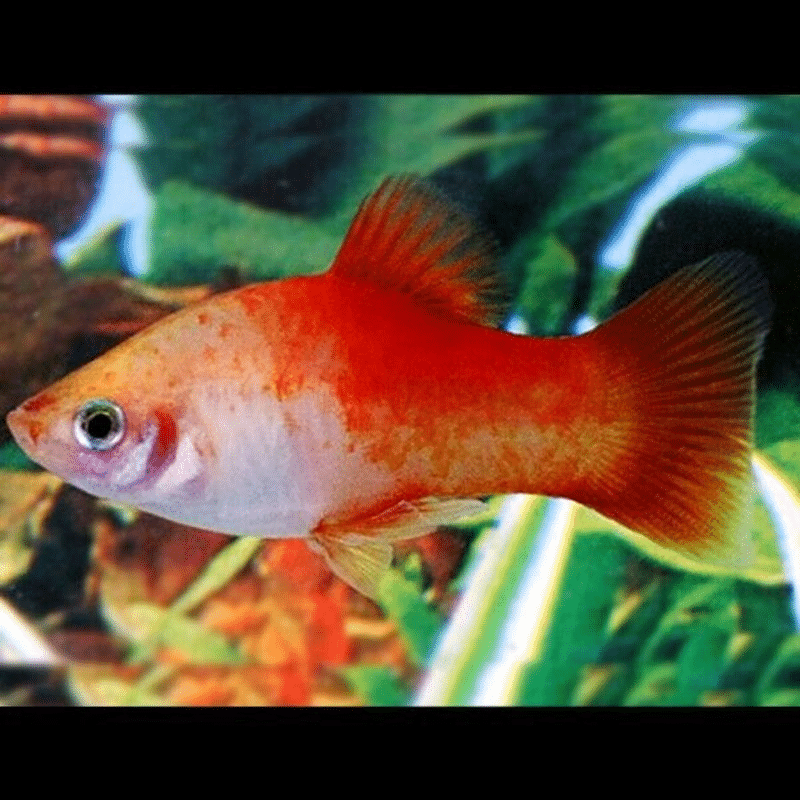
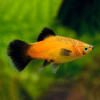
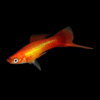
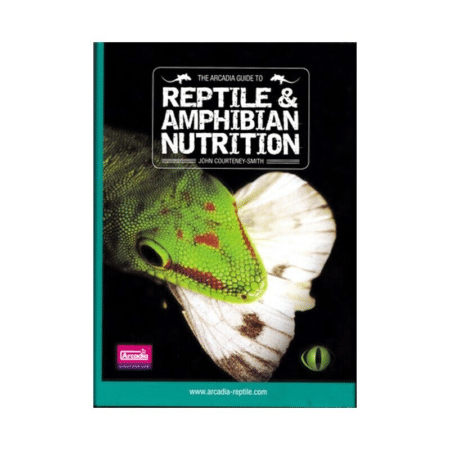


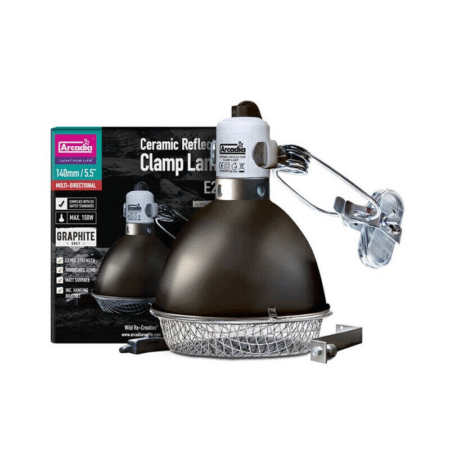
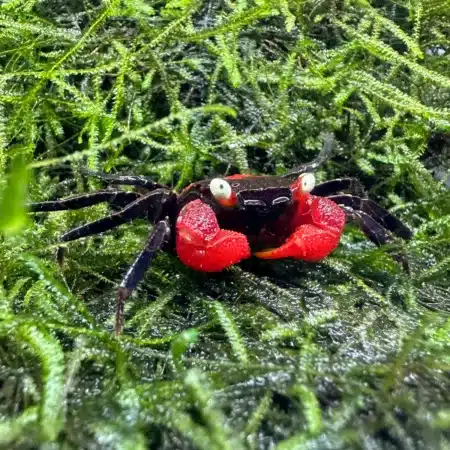
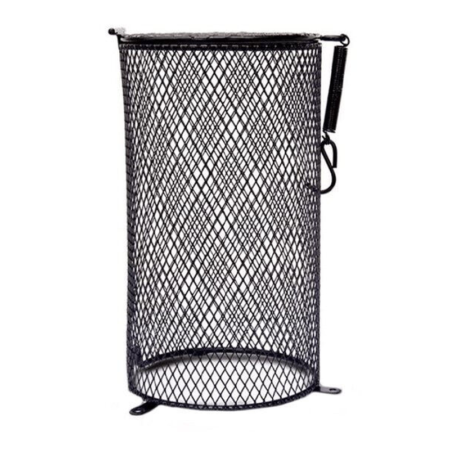
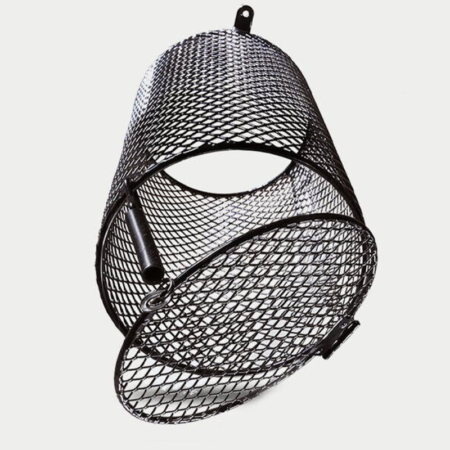



Emily Carter (verified owner) –
I recently purchased the 4 Apple Platies and I couldn’t be happier! After about two weeks in my community tank, these little guys have truly brightened my aquarium. They are active, playful, and incredibly friendly with my other fish, including my guppies and neon tetras. The colors are stunning, especially when the light hits them just right! I appreciate that they are livebearers, which means I might get to see some baby platies in the future.
What sets these platies apart from others I have kept is their calm demeanor and adaptability; they have settled in wonderfully with no signs of stress. I did notice a minor concern with one of them being a bit shy at first, but with some patience, they all now come to the front of the tank when it’s feeding time.
If you’re looking to add vibrant life to your aquarium, I highly recommend these platies! They are perfect for beginners and seasoned aquarists alike. Just make sure to provide a well-planted environment for them to thrive. Overall, fantastic value and I would definitely buy again!
Emily Carter (verified owner) –
I recently added 4 Apple Platies to my community aquarium, and I couldn’t be happier! These little beauties have brought so much life to my tank. They arrived in great condition, and I was pleasantly surprised to see their vibrant colors—especially the orange and yellow highlights—really stand out among my guppies and neon tetras. It’s been about two months since I introduced them, and they’ve settled in beautifully, swimming around with their new friends and exploring every nook of the aquarium.
One of the things I love most is how they’re such friendly fish. Unlike some others I’ve tried, they don’t hide away—they’re always out and about. The only minor concern I had was that they seemed a bit shy for the first few days, but that quickly changed as they adjusted. If you’re looking to enhance your tropical fish collection, I highly recommend these Apple Platies. They’re perfect companions for guppies and neon tetras, adding a splash of color and personality to any aquarium.
Overall, a fantastic purchase—definitely a five-star experience!
Tip: Ensure you have plenty of hiding spots in your tank to help them acclimate faster—it made a world of difference for mine!